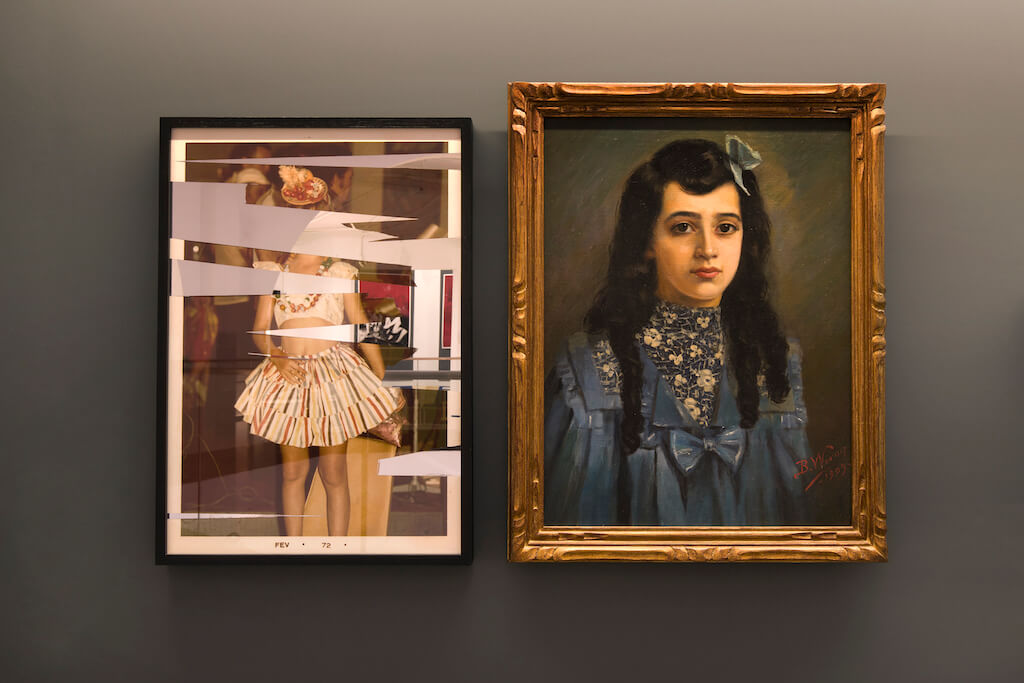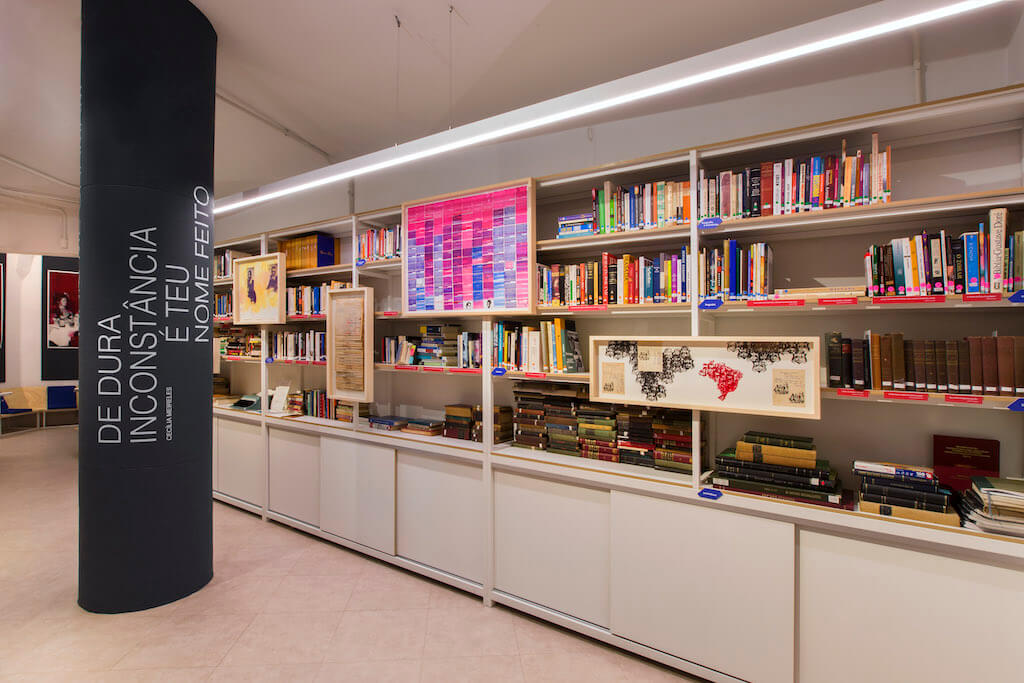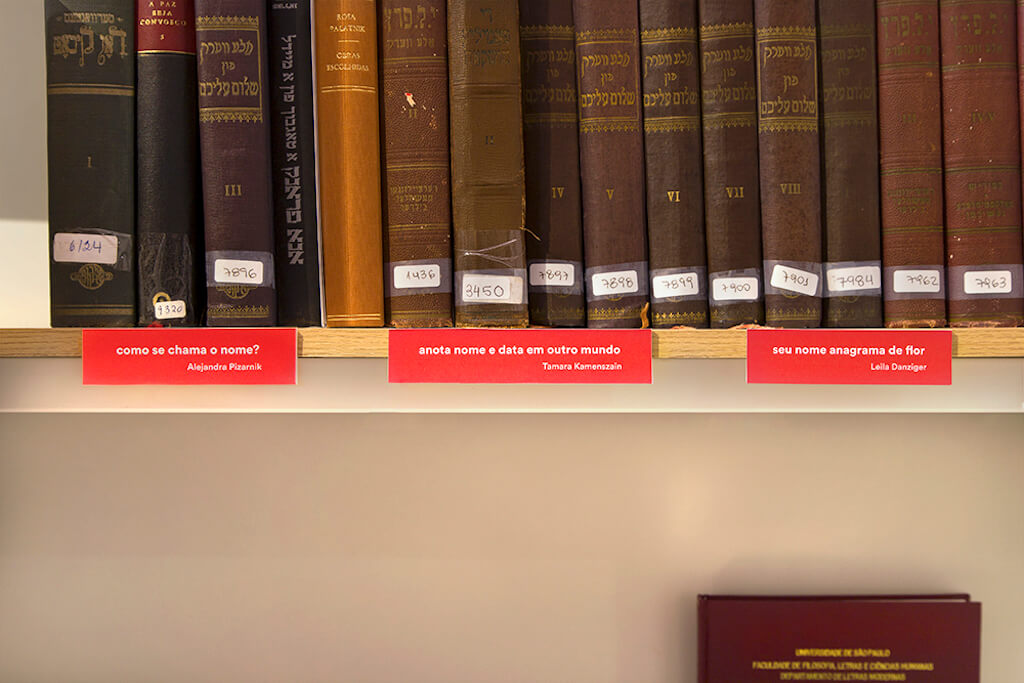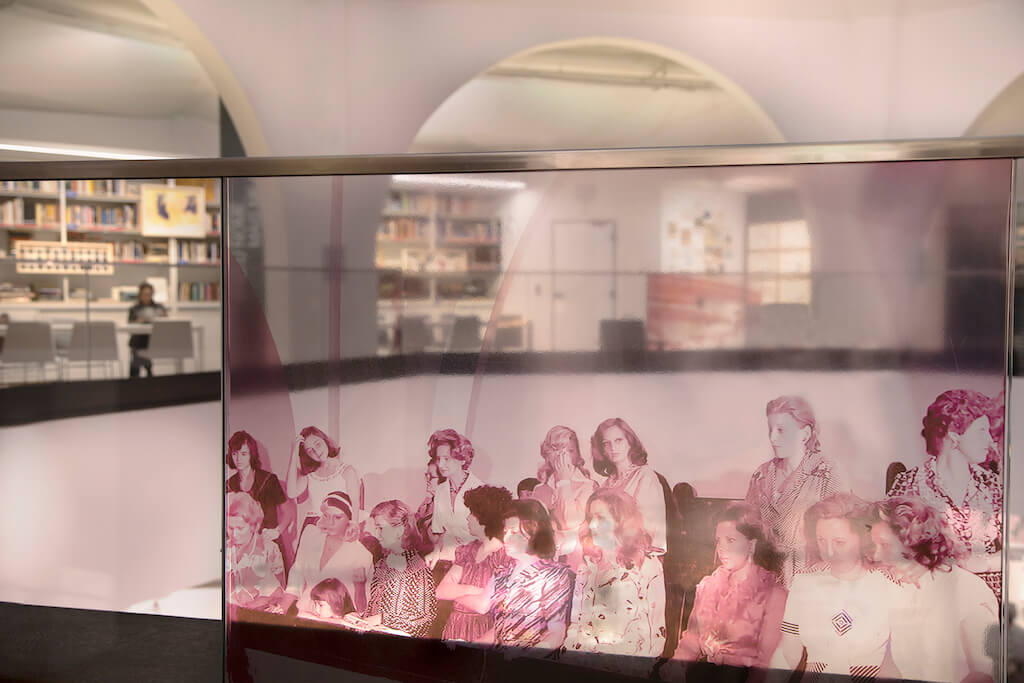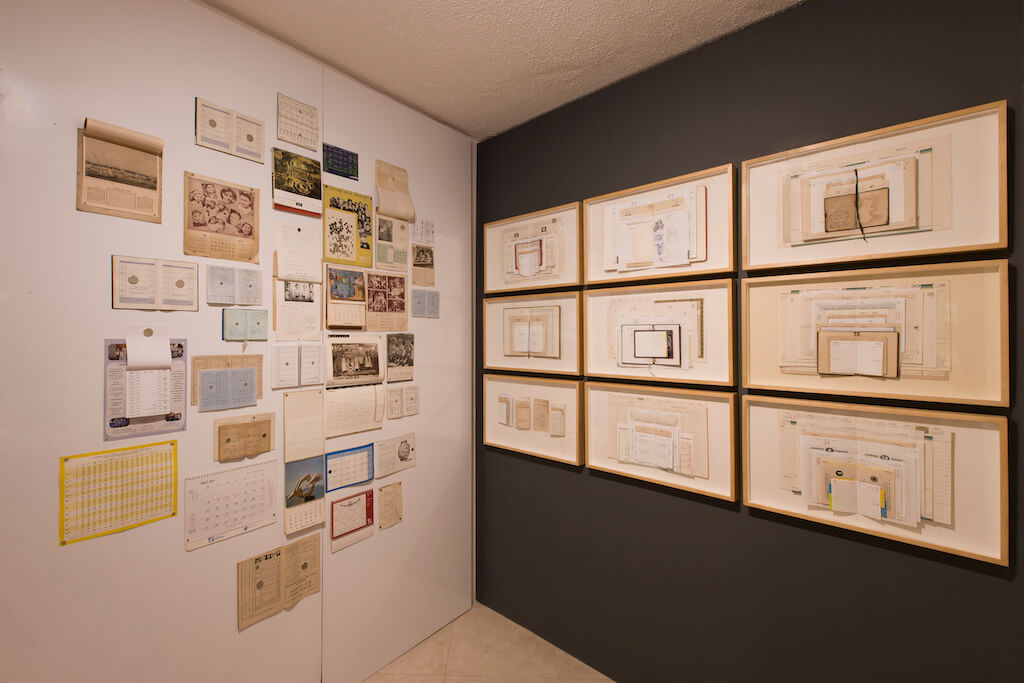Starting July 30, the Museu Judaico de São Paulo (MUJ) will present To Walk Down from the Clouds, an exhibition by Leila Danziger displayed on the mezzanine level, a space set aside for exhibitions related to the Museum’s collection. The exhibition is curated by Felipe Chaimovich, the museum’s Director of Curation and Participation. In To Walk Down from the Clouds, the artist, poet, professor and researcher Leila Danziger explores the collection of books, photographs and other documents in the institution’s Center for Memory, currently the largest collection on Jewish immigration and presence in Brazil. She grouped the mementos of strangers with objects from her own family, and combined political figures with fictional characters. Her aim with the work was to make the public reflect on their own history through pictures, memories and identities.
The artist selected images of children, youths and elderly people with different Jewish experiences and used these objects as raw material for her creation, which was developed in layers with the overlapping of elements and materials.
In another creation, she developed a series of works based on photographs with important religious leaders who fought in the movements for black civil rights, such as the Reverend Martin Luther King and Rabbi Abraham J. Heschel, who, in this context of struggle, uttered the famous phrase: “I felt my legs were praying”.
The artist also remembers the meeting between Clarice Lispector (1920-1977), who had been born in Ukraine and immigrated to Brazil, and Carolina Maria de Jesus (1914-1977), a native of Minas Gerais who lived in São Paulo, capturing the mutual admiration of two writers who marked the country’s literature of the second half of the 20th century.
Among the works is the painting “Andréa”, from 1909, from the Museum’s collection, by Bertha Worms, a pioneer in the teaching and professionalization of women painters in São Paulo. Also on display is a bracelet that belonged to Leila Danziger’s paternal grandmother, an object included in the work by the artist entitled Balangandãs, in which the jewelry is associated with a 19th century Brazilian watercolor. Leila Danziger proposes a reflection on “names”, one of the first tools of human language. For Jewish society, the question of language is one of the themes of the book of Genesis, since, in it, the first human is able to name the creatures in the Garden of Eden. To convey this research, the artist selected books whose titles include the word “name” from the Museum’s library. These books are available on the shelves of the library on the mezzanine level where the public can consult them freely. Curator Felipe Chaimovich emphasizes: “When we assign names to old memories, we are able to see different possible futures. To produce this effect, the artist stacks old blank appointment book pages, one on top of the other, combining the Jewish calendar with the Gregorian: if time is a human dimension, we are responsible for our history.”



